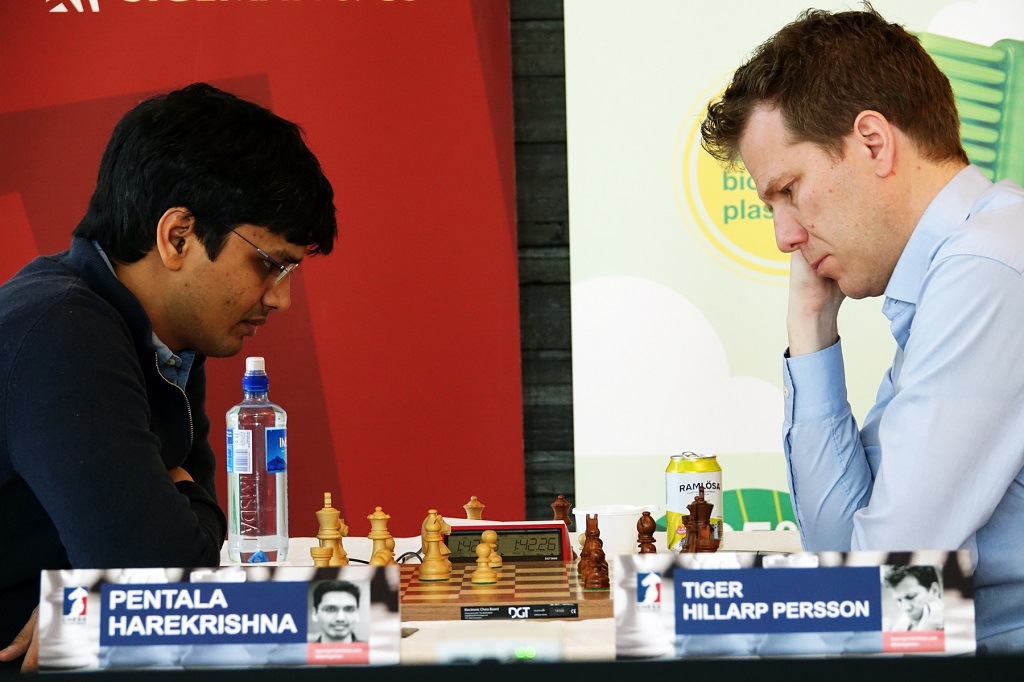


The first edition of the Sigeman & Co Chess Tournament was played in 1993, when Swedish grandmaster Ferdinand Hellers finished ahead of nine other players after scoring 6½ points. The event was a ten-player single round robin until 2008 — except in the year 2000, when Judit Polgar won a four-player double round robin ahead of Jan Timman, Ulf Andersson and Tiger Hillarp Persson. From 2009 until 2018, six times the event had a six-player field and twice it included eight participants, the format used this year.
Traditionally, the tournament shows a nice mix of local representatives and strong players that are either on the rise or are known for showing a pleasant disposition in previous appearances. Or at least that is how it looks from the outside. Everybody seems to enjoy playing at the long-established event!
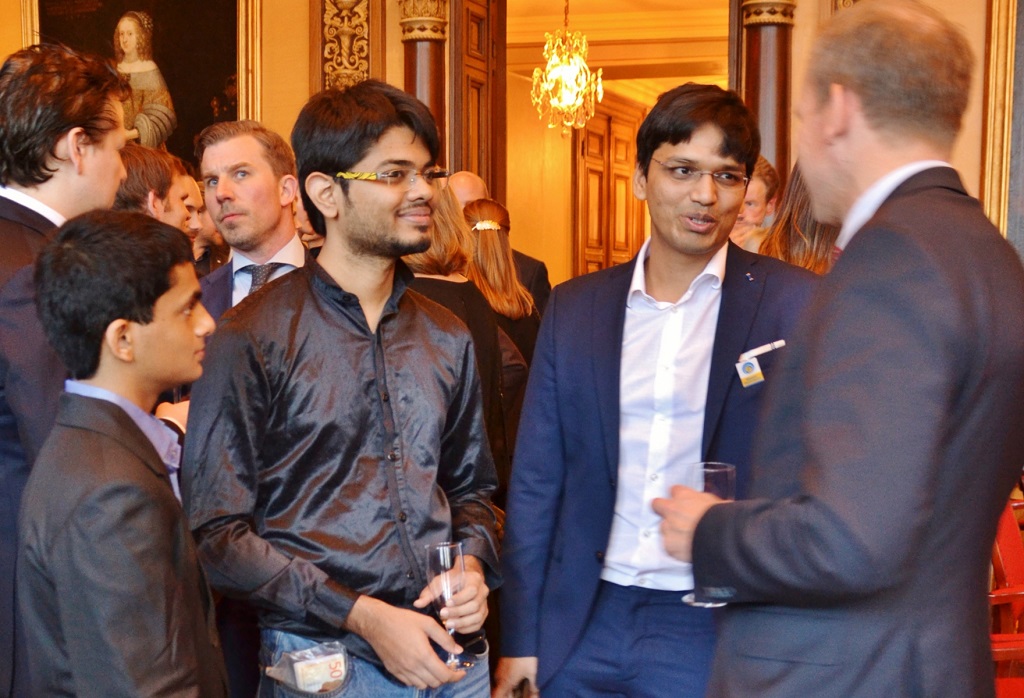
Nihal Sarin with his trainer Srinath Naryanan (centre) and Harikrishna during the opening ceremony | Photo: Official site
The first round saw three games last over sixty moves! Nils Grandelius and Liviu-Dieter Nispeanu were the only ones to have a short day of work, as they drew in 22 moves; Pentala Harikrishna missed a couple of chances to take down Tiger Hillarp Persson (although the Sweden GM was the one pushing at times); while Nihal Sarin had Ivan Saric against the ropes but could not convert (more on that below). In the end, only Gawain Jones got a full point, after beating Parham Maghsoodloo with the black pieces.
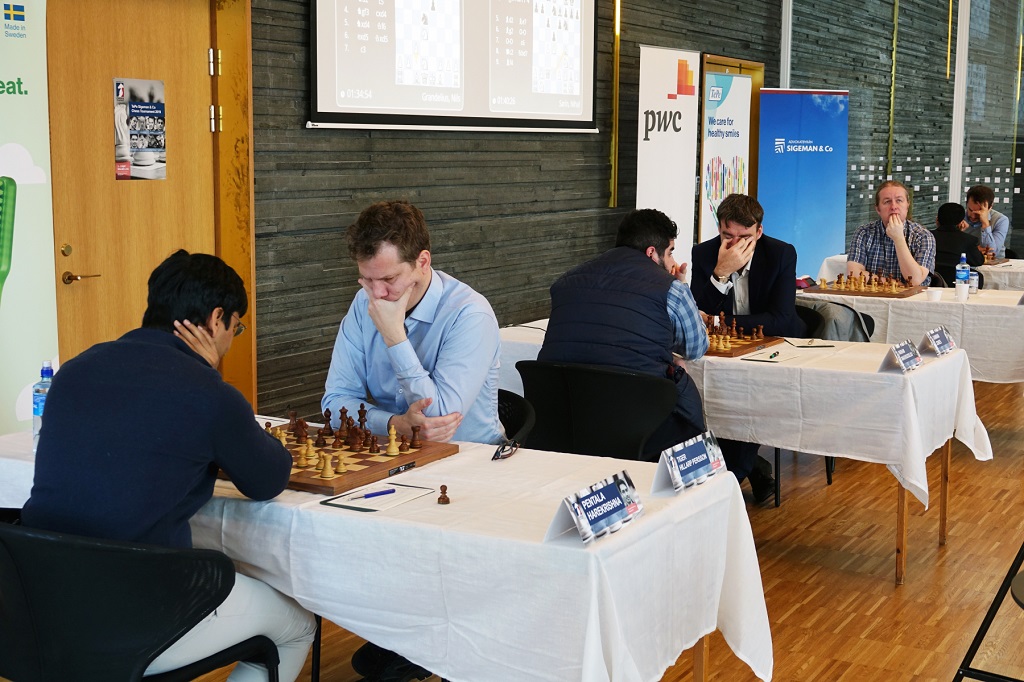
The playing hall during round one | Photo: Official site
Gawain had a better position out of the opening and missed a big forcing shot on move 24:
You can try your own variations on the diagram!
24...♞h3+ forces 25.♗xh3 ♛xh3 26.f3 and now Black has 26...♞g4!
If White captures with 27.♘xg4 Black can go 27...♝xf3! — the game would continue 28.♕xf3 ♝xd4+ 29.♘xd4 ♜xc1+ 30.♔f2, when either 30...♛f1+ or 30...♜f1+ leave White busted.
That is not what Jones played, though. He went 24...♜xc1+ and ended up with a material advantage after the time control (a piece for a pawn). With good technique, he transformed his advantage into a full point after 61 moves. The player from Keighley had a good performance at the recent Reykjavik Open, which helped him surpass the 2700-mark and become England's number one in the last official rating list.
Busy but very enjoyable few weeks. Reykjavik always fantastic and even better this time accompanied by good Kiwi friends @billforsternz, Maria and Alan. 1st= and published over 2700 for the first time. Straight to Italian Master making debut for victorious Padova. Now to Malmö!
— Gawain Jones (@GMGawain) 2 de mayo de 2019
In round two, Harikrishna had the upper hand in the middlegame against Maghsoodloo, but was also in slight danger in the endgame — it all resulted in a 60-move draw. Nisipeanu was a pawn up against Sarin, but the youngster showed good defensive skills to hold the balance. Jones and defending champion Nils Grandelius split the point after 29 moves.
The only winner of the day was Hillarp Persson, who methodically took down Saric in 37 moves. In an already dire position, the Croatian player faltered by capturing White's 'free' a-pawn:
27...♝xa4 allows White to gain the exchange almost by force: 28.♗xf5 gxf5 29.♖e6 ♛f7 30.♕g3+ ♛g7 31.♕xg7 ♚xg7 32.♗h6+ and Black resigned five moves later.

The locals mingling during the opening ceremony | Photo: Official site
Hillarp Persson confidently went on to play the Sicilian against World Junior Champion Parham Maghsoodloo. With active play, however, the Iranian bounced back from his loss in round one, despite having confessed afterwards that he mistakenly prepared for the other Swedish player in the event, Nils Grandelius! This result left both players on an even 1½/3 score.
While his compatriot suffered a loss against a player that was ready to face him, Nils Grandelius had Harikrishna across the board — a player that arrived in Malmö after scoring five wins in Shenzhen. Out of a complex Italian Opening, 'Hari' simplified into a knight v bishop endgame with four pawns per side.
India's number two went on to squeeze a fine technical 72-move win from this position.
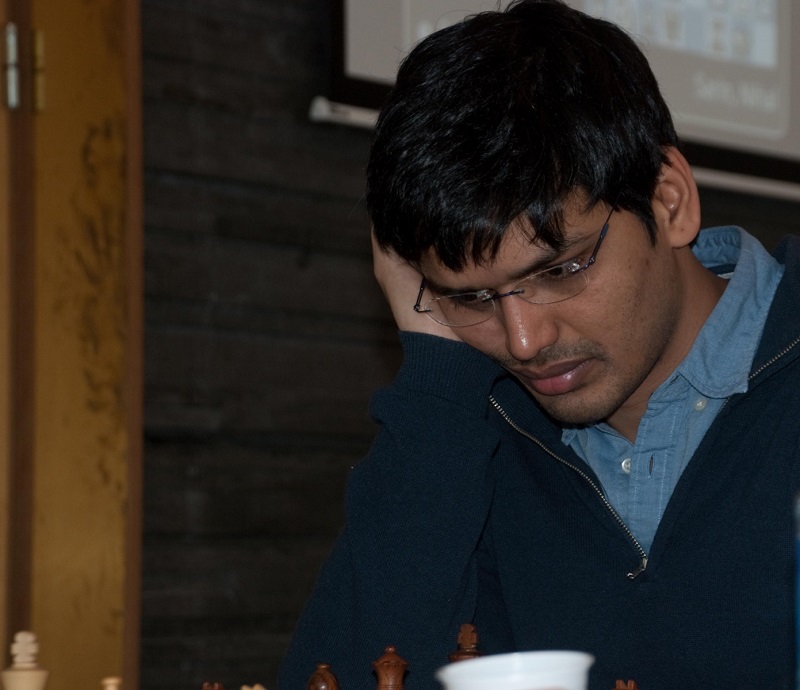
In good form: Pentala Harikrishna | Photo: Official site
Ivan Saric could not convert a queen endgame with a pawn to the good against Nisipeanu, while leader Gawain Jones played a highly interesting draw against Sarin.
The official site published short interviews with all the participants of this year's edition. When they asked Nihal what he considered to be his main strength as a chess player, the 14-year-old answered pragmatically:
I don’t know yet. I just love playing. Too early to think about these things for me I suppose.
A fine attitude, when you know you have a long road ahead! Nihal's rating prior to this event was 2598, and after drawing his first three games against higher-rated opposition he crossed the 2600-barrier, thus temporarily becoming the youngest 2600+ rated player in the world. It remains to be seen whether he can maintain that 'title' until the next official list, but he has certainly shown he has what it takes to compete against the big guns.
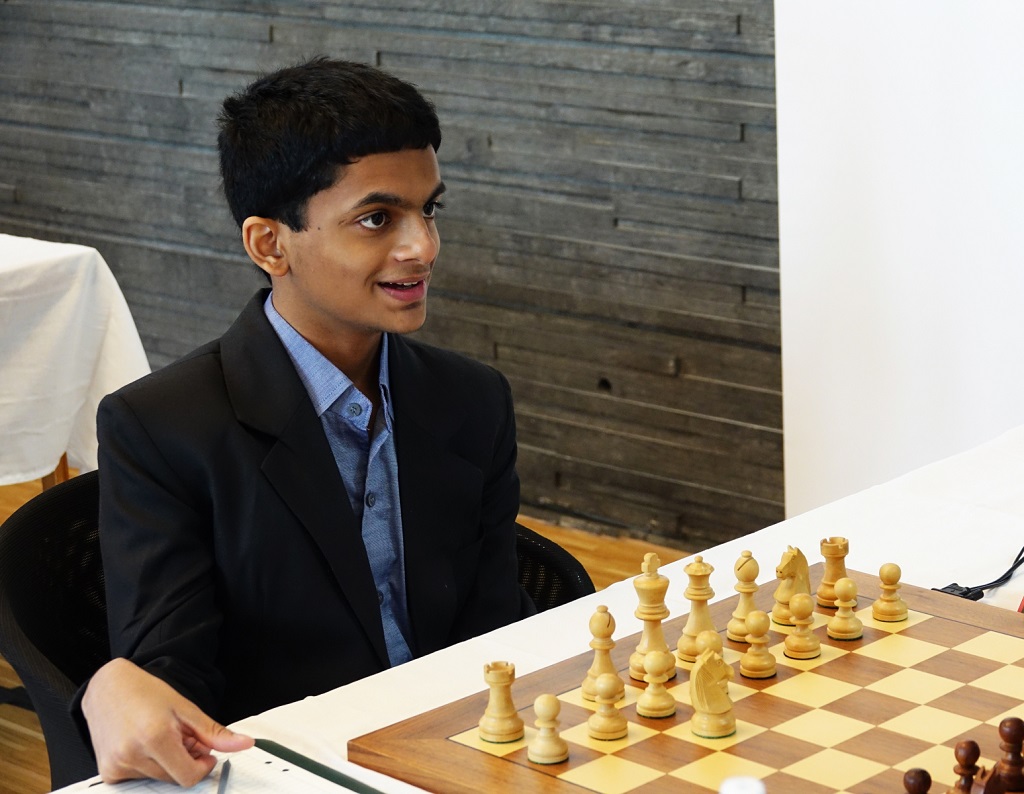
Fearless Nihal | Photo: Official site
GM Sagar Shah analysed Nihal's games from rounds one and two:
Click or tap the second game in the list below the board to switch games